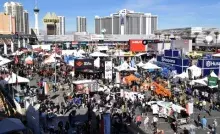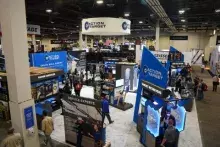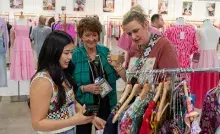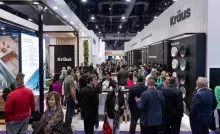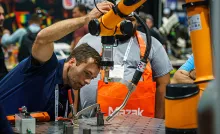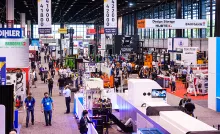Horace Greeley once famously said, "Go West, young man, go West and grow up with the country." Although Greeley made this statement in 1833 as the founder of the New York Tribune, the sentiment resonated with me during my recent visits to three global industry events in Philadelphia, Manchester, U.K., and Singapore. Today, Greeley’s advice could just as easily encourage entrepreneurs to look both East and West for new opportunities.
At the 2024 SISO Leadership Conference in August in Philadelphia, one of the most dynamic sessions was led by Walter Charnizon., president of TechHQ and owner of Continential Exhibitions. The energy in the small business breakout group was palpable, as passionate entrepreneurs shared their enthusiasm for launching new products and expanding their businesses. It’s clear that America remains the land of opportunity, where the entrepreneurial spirit thrives.
In Manchester, U.K. on Sept. 5, the AEO Conference stood out as one of the best I have attended. A key highlight was the international panel discussing how U.K. organizers continue to lead the way in expanding their operations globally. The U.K. boasts an exceptional talent pool, and this is evident in the number of innovative products being launched.
It’s particularly encouraging to see the rise of U.K. event entrepreneurs taking their brands overseas. AEO also recognized the critical role private independent entrepreneurs play in driving the industry forward by establishing the new PIE (Private Independent Entrepreneurs) working group.
The third event, the Asia CEO Summit that opened Sept. 24 in Singapore, marked another collaboration between Western and Eastern event organizers. This growing partnership, led by AEO, SISO, UFI, and SACEOS, allows both sides to exchange ideas and strategies for industry development. It’s clear the learning goes both ways; as much as the West can offer its experience to the East, there’s also a wealth of knowledge to be gained from the entrepreneurial successes in Asia.
If Greeley were writing today, perhaps his advice would be: “Go West or East, young person, for there are immense opportunities waiting for you.”
Don’t miss any event-related news: Sign up for our weekly e-newsletter HERE, listen to our latest podcast HERE and engage with us on LinkedIn!
Homepage
To send in your exhibit or show photos, please contact: news@tsnn.com
Partner Voices

MGM Resorts is committed to fostering an inclusive and diverse culture, not just among employees and guests but also within its supply chain. The company prioritizes procuring goods and services from businesses owned by minorities, women, veterans, people with disabilities, LGBTQ individuals and those facing economic disadvantages. This commitment is integral to MGM Resorts' global procurement strategy.
Through its voluntary supplier diversity program, MGM Resorts actively identifies and connects certified diverse-owned suppliers to opportunities within its supply chain. The company is on track to spend at least 15% of its biddable procurement with diverse-owned businesses by 2025, demonstrating that supplier diversity is not only a social responsibility but also a strategic business imperative.
Supplier diversity isn’t just the right thing to do – it’s good for business. A diverse supply chain allows access to a broader range of perspectives and experience, helping to drive innovation, entrepreneurship and resilience, while strengthening communities. At MGM Resorts, engaging diverse suppliers ensures best-in-class experiences for guests and clients. Supplier diversity ensures a more resilient supply chain while supporting economic development in the communities in which it operates.
The impact of MGM Resorts' supplier diversity initiatives is significant. In 2023, these efforts supported over 3,500 jobs across more than 30 states, contributed over $214 million in income for diverse-owned businesses and generated more than $62 million in tax revenue. The story extends beyond the numbers – it reflects the tangible benefits brought to small and diverse-owned businesses, fostering economic empowerment in their communities.
MGM Resorts also supports the development and business skills of diverse-owned businesses through investment, mentorship and education. Through the MGM Resorts Supplier Diversity Mentorship Program, the company identifies, mentors and develops diverse-owned businesses to fill its future pipeline, while providing businesses with tools and resources to empower and uplift. Since 2017, the program has successfully graduated 105 diverse-owned businesses and is on track to achieve its goal of 150 graduates by 2025.
MGM Resorts’ commitment to supplier diversity not only enhances its business operations but also plays a crucial role in uplifting communities and fostering economic development. This approach reinforces the idea that diversity is a powerful driver of innovation and resilience, benefiting both the company and the wider community.














